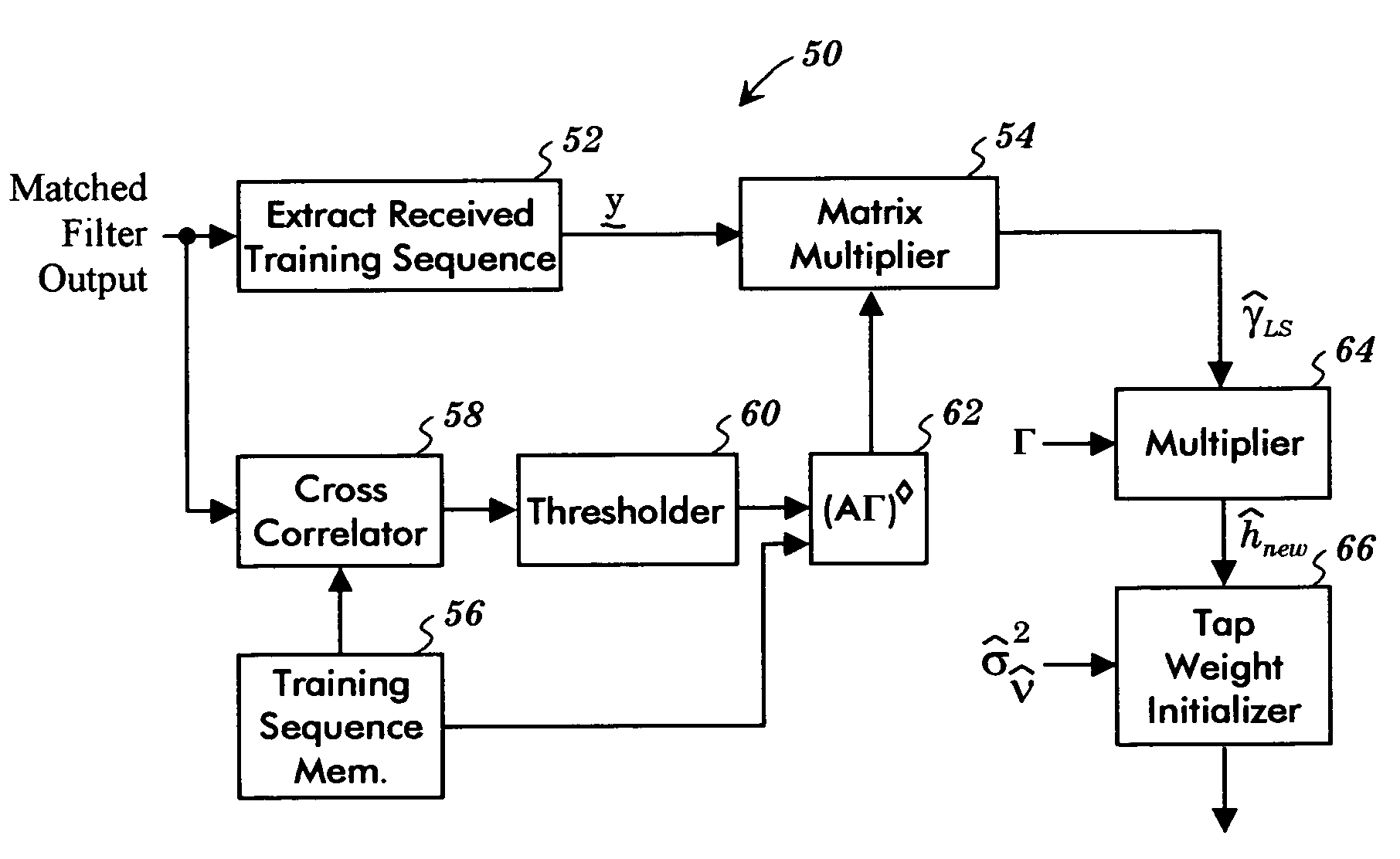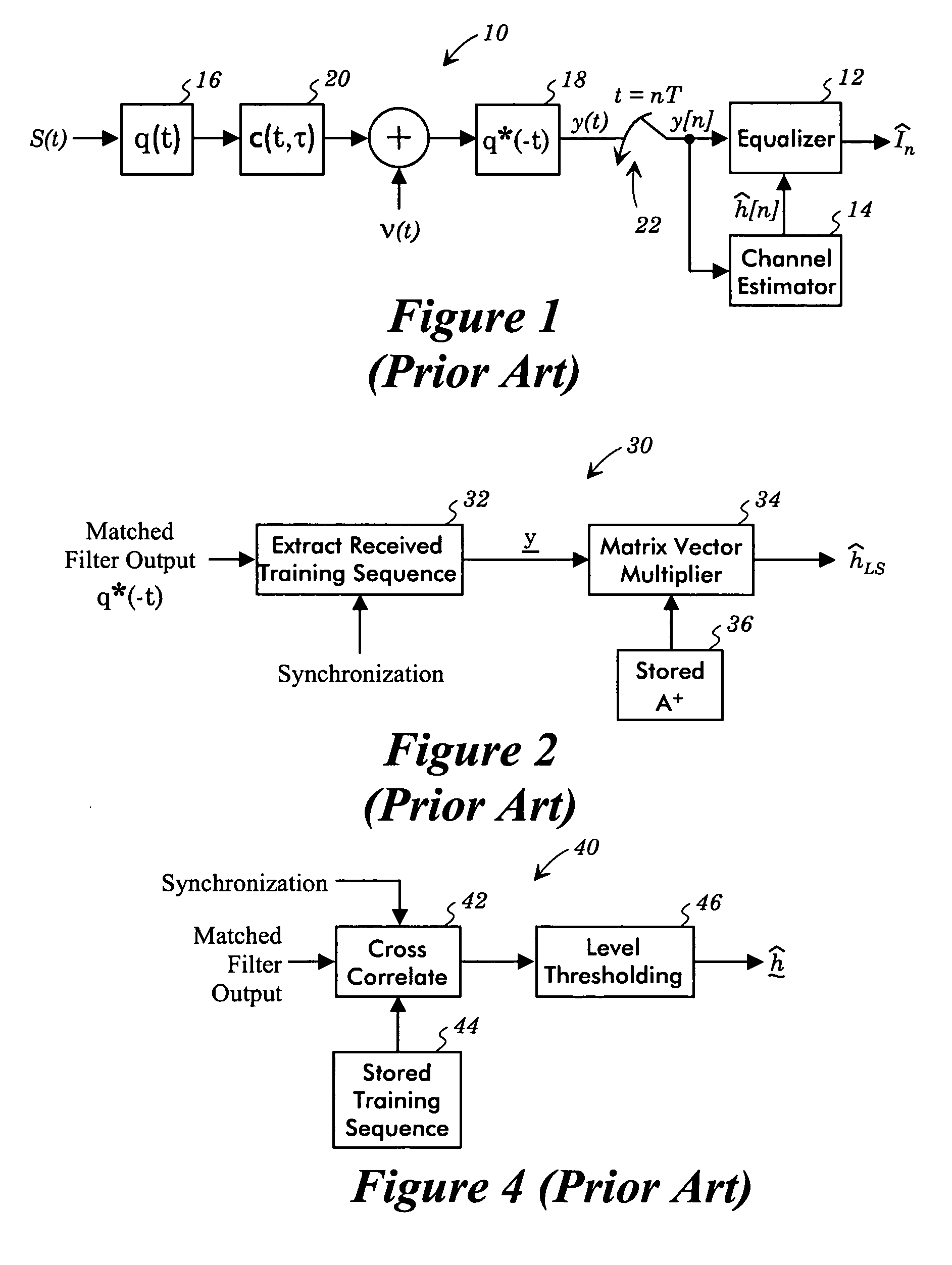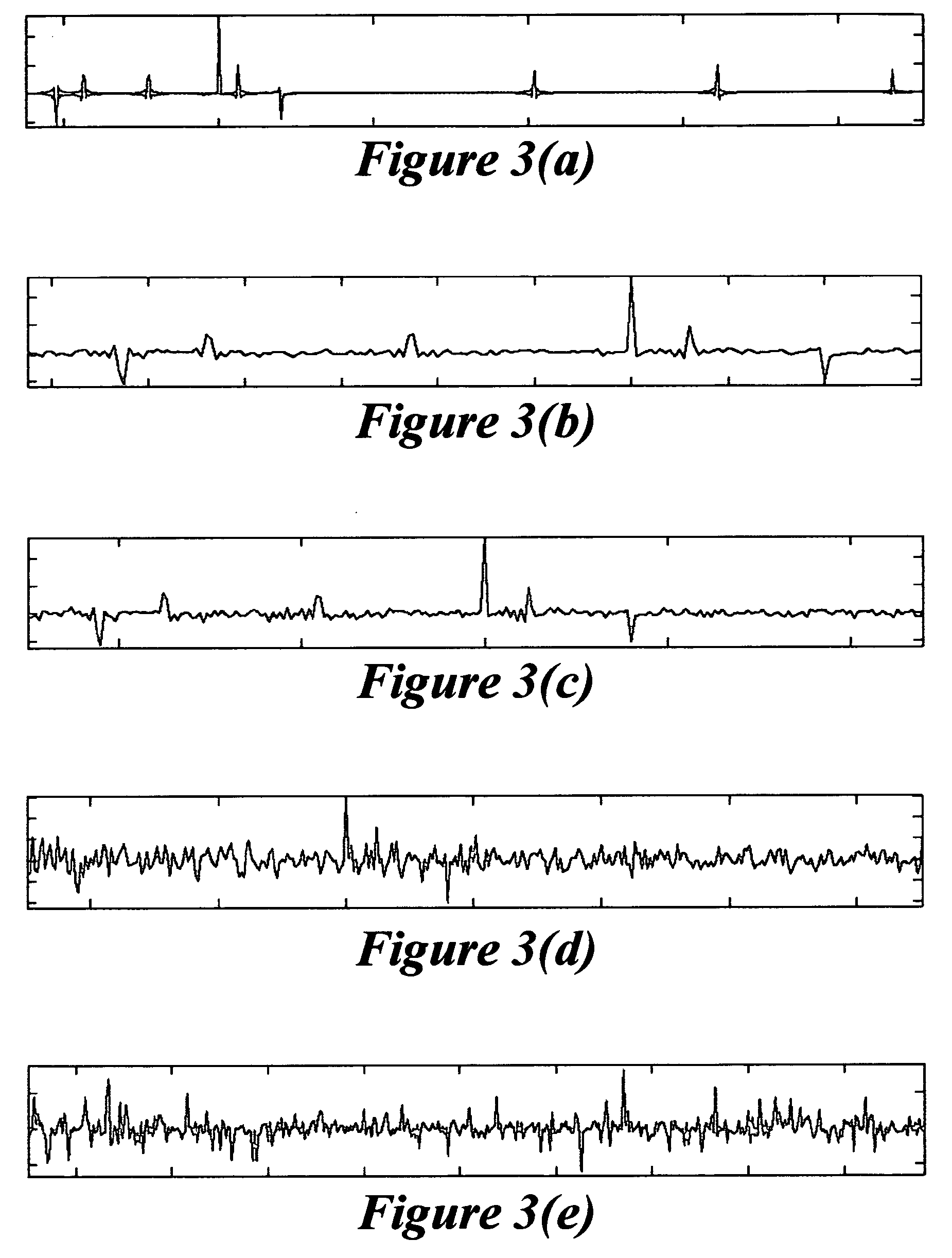Channel estimation method blending correlation and least-squares based approaches
a channel estimation and correlation technology, applied in the field of channel estimators, can solve problems such as uncertainty, uncertainty, and uncertainty associated with actual channel spread, and solve the problems of least-squares based channel estimators that may be insurmountabl
- Summary
- Abstract
- Description
- Claims
- Application Information
AI Technical Summary
Benefits of technology
Problems solved by technology
Method used
Image
Examples
Embodiment Construction
[0066]FIG. 6 illustrates a blended channel estimator 50 having a sample extractor 52, a matrix multiplier 54, a training sequence memory 56 that stores a training sequence, a cross-correlator 58, a level thresholder 60, a combiner unit 62, a multiplier 64, and a tap weight initializer 66. The sample extractor 52 extracts values {tilde under (y)} from the output of a receiver's matched filter, and the matrix multiplier 54 multiplies the extracted values {tilde under (y)} by a matrix (AΓ)⋄, where the matrix (AΓ)⋄ is calculated by the combining unit 62 in the manner described below. The cross-correlator 58 cross-correlates the received signal with the stored training sequence stored in the memory 56 and the resulting cross-correlation is thresholded by the level thresholder 60 so that the combining unit 62 can construct the matrix (AΓ)⋄ from the output of the level thresholder 60 and the training sequence stored in the memory 56.
[0067]Thus, the blended estimation procedure illustrated ...
PUM
 Login to View More
Login to View More Abstract
Description
Claims
Application Information
 Login to View More
Login to View More - R&D
- Intellectual Property
- Life Sciences
- Materials
- Tech Scout
- Unparalleled Data Quality
- Higher Quality Content
- 60% Fewer Hallucinations
Browse by: Latest US Patents, China's latest patents, Technical Efficacy Thesaurus, Application Domain, Technology Topic, Popular Technical Reports.
© 2025 PatSnap. All rights reserved.Legal|Privacy policy|Modern Slavery Act Transparency Statement|Sitemap|About US| Contact US: help@patsnap.com



